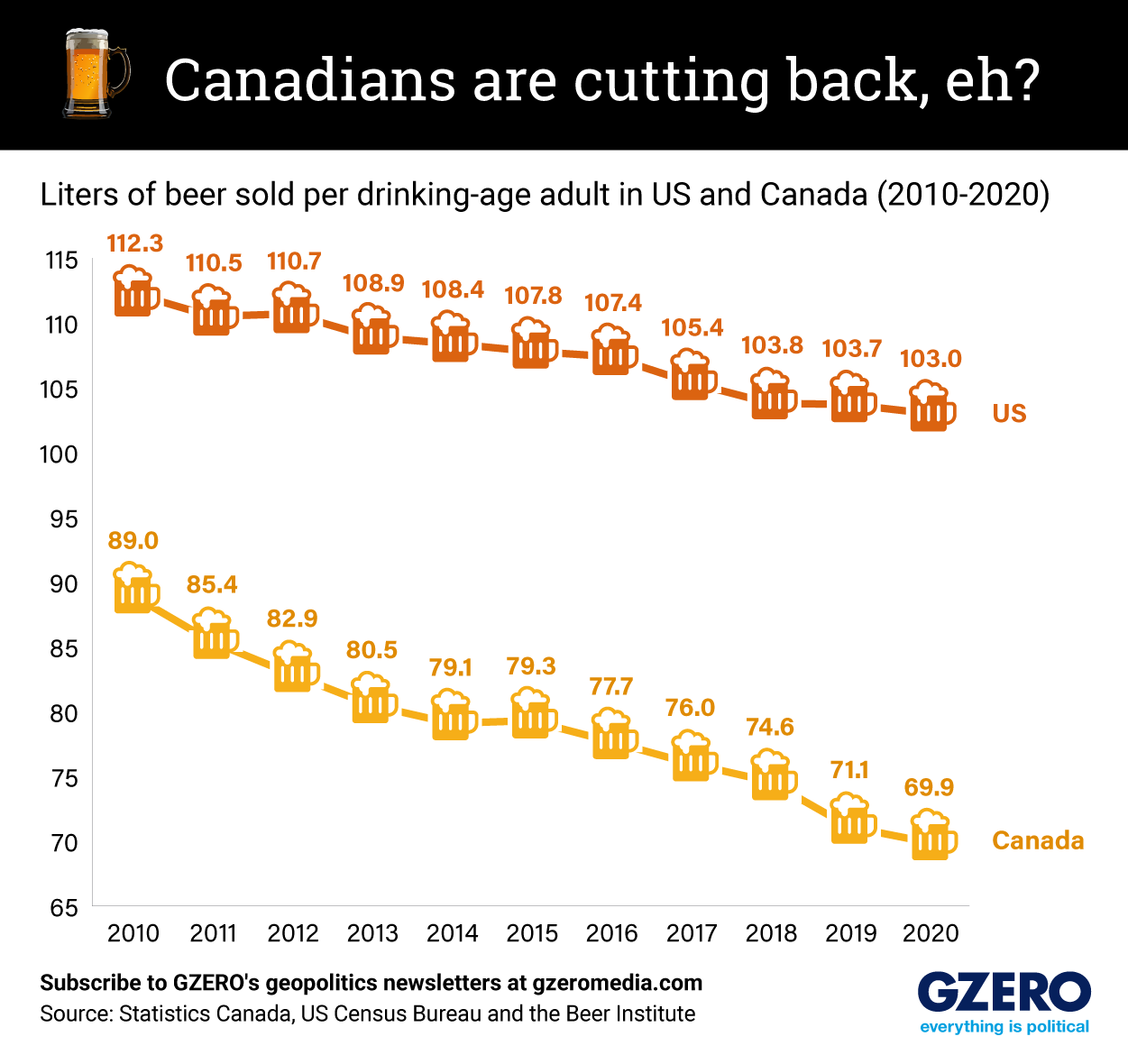If “beer is proof that God loves us and wants us to be happy,” then public health officials in Canada have strayed from the path of righteousness. Earlier this year, Canadian health authorities changed their recommendations on alcohol consumption to just two drinks a week for healthy adults.
In the United States, George Koob, director of the National Institute on Alcohol Abuse and Alcoholism, set off a right-wing media firestorm in August when he said that the Department of Agriculture could follow Ottawa’s lead.
Fret not, fellow tipplers, the White House has our backs. The Biden administration vehemently denied it would back such guidelines —- and more to the point, they’re just that: guidelines. The federal government can’t actually stop anyone from drinking, but it is their job to inform the public about the health risks of alcohol.
Either way, beer consumption in particular is declining on both sides of the border. Canadians of drinking age bought about 70 liters of beer per person in 2020, down from 89 liters in 2010 and over 128 liters at the peak in 1973 (a rough year, apparently).
Americans consume about half again as much as their northern cousins, but there are a couple of things to keep in mind. First, Canada’s drinking age is 18 and 19 in most provinces, compared to 21 across the US —- not that it has ever prevented American teens from partying. The data does not include underage drinkers but does include the beer they drink, which inflates the US numbers.
Second, Canadian beer tends to be a little stronger, in the 5-6% alcohol by volume range compared to the 4-5% for American brews. That means Canadians are drinking about 20% less beer for the same buzz.
So who are the real beer lovers? Only one way to settle it: an international beer pong tournament, with the winner taking Niagara Falls.
